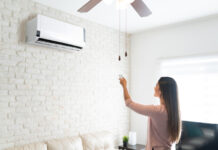When you have a home business and can technically work in sweatpants and a T-shirt whenever you feel like it, developing a professional-looking brand might feel challenging (or even unnecessary). But when you’re an entrepreneur, image is everything—and that means you’ll want to use stationery that keeps your work organized and professional-looking, presenting your company in the best possible light. Here are four types you’ll want to make sure you have on hand.
Letterheads
Anytime you send someone correspondence as part of your business (whether it’s a sales letter, a proposal, or something more personal), a letterhead helps give it a professional, official-looking touch. If you want to get technical, a letterhead isn’t really a piece of stationery at all; it’s the heading at the top of a piece of letter paper that includes the company’s name and contact information. Colloquially, though, many people refer to these sheets as “letterheads.”
Since they’re often used for many different purposes, it’s important for your business letterhead to match the organization’s overall image, with a logo and font that is consistent with the rest of your branding. Make sure that the contact information is clear and easy for the user to find so that they can reach you without difficulty.
Envelopes
Naturally, you won’t be able to mail anything to clients or partners without a proper envelope—but if you want to look like a respectable company, you may want to consider using envelopes that have been professionally printed in a manner similar to your letterhead. A well-designed envelope can make your recipient more likely to open it and look at the materials inside, so it’s something you shouldn’t take lightly.
For correspondence containing sensitive financial information (such as bills or invoices), you may want to use an envelope with a security tint (a pattern on the inside that makes it more difficult to see the envelope’s contents when you hold it up to the light).
File Folders
File folders are your basic meat-and-potatoes when it comes to keeping your office organized. Labeled tabs allow you to sort your materials into easily-accessible categories, which is especially helpful when using hanging file folders in the drawer of a filing cabinet.
These types of folders might not necessarily ever leave your home office, so you may not need to worry much about their appearance. If there’s ever a situation where you would use them in a professional meeting or networking event, however, you’ll want to make sure they look professional. Just like any other type of stationery, you can add your organization’s branding to the cover to show that you mean business.
Business Cards
Anytime you’re in a situation where networking is even a remote possibility, you’re going to want to have business cards on hand. They’re a simple and convenient way to supply new contacts with ways that they can reach you.
A business card design doesn’t need to be especially complex, but it’s a good idea to stand out in some way so that you can set yourself apart from the dozens of other cards that your peers might receive at a networking event. An unusual stock, creative die cut, or colorful logo are all valid ways to achieve this.
These are the fundamental staples of the home office, but every business is different. You may find that other types of stationery are essential for your particular line of work.
Do you use other types of stationery for your home business? Let us know in the comments below.
Find a Home-Based Business to Start-Up >>> Hundreds of Business Listings.

















































